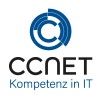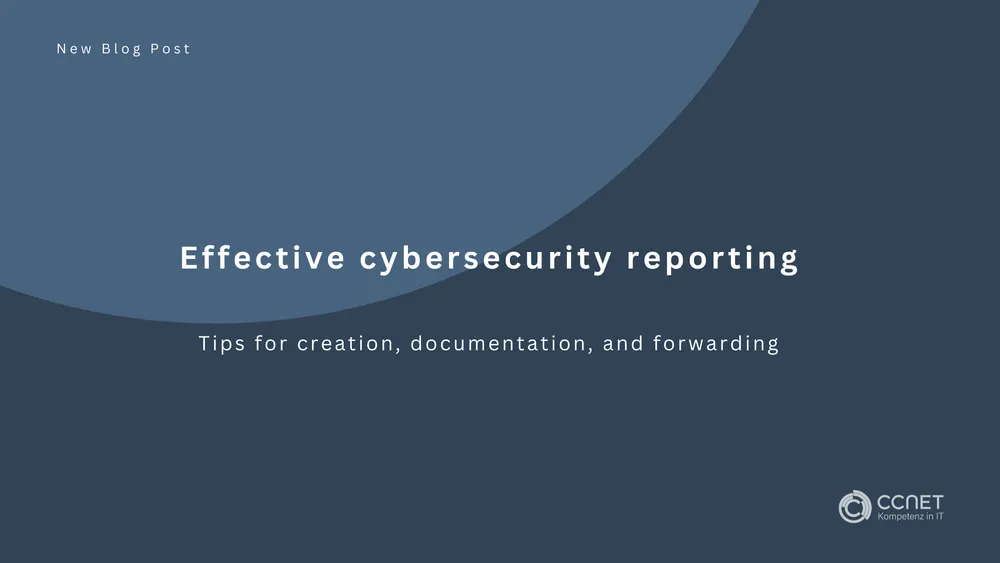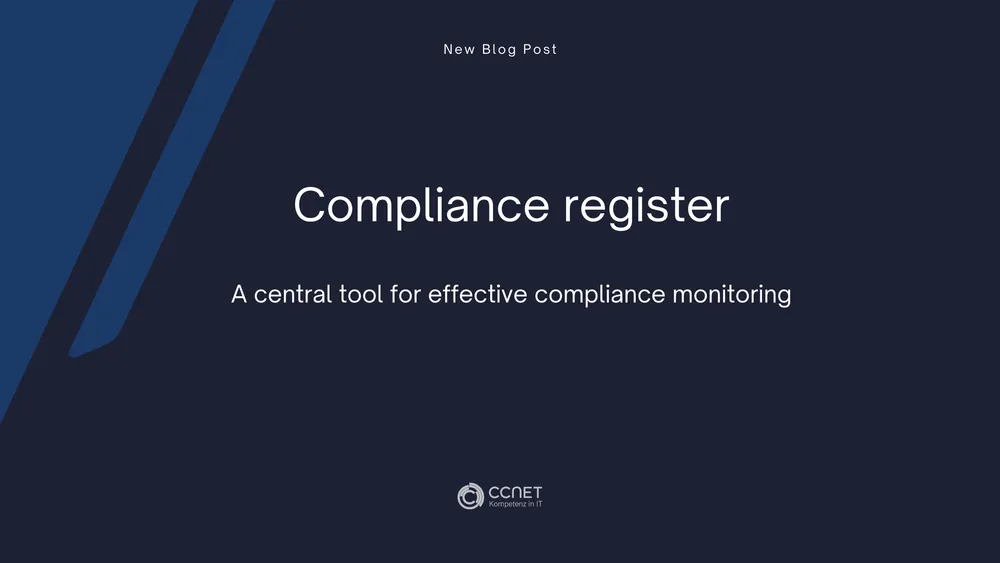
CCNet
Jan 13, 2025 • 2 min read

NIS2-Compliant Detection and Prevention of Cyberattacks Using SIEM Systems
An effective SIEM system (Security Information and Event Management) is a central component of a company's cybersecurity strategy. It helps detect threats early and respond to them promptly. By continuously monitoring all security-related events in the network, the system enables rapid alerts when unusual activities occur and contributes to the continuous improvement of defense mechanisms, ensuring that the company remains NIS2-Compliant.
Objective and Overview
A SIEM system monitors all security-related events in real time to detect suspicious activities early and prevent attacks. The system collects data from sources such as firewalls, Intrusion Detection and Prevention Systems (IDS/IPS), and antivirus solutions to ensure a holistic analysis of IT security.
Scope and Functionality of the Process
Monitoring covers all IT systems, networks, applications, and devices of the company. The SIEM system aggregates and analyzes data from various security tools to detect patterns and anomalies. When suspicious activities occur, an automatic alert is triggered, enabling immediate action. In addition, regular reports are generated to provide transparency regarding the security status.
Steps for Implementing and Using a SIEM System
-
Introduction and Configuration
Initially, the SIEM system is planned, and all relevant data sources, such as firewalls, IDS/IPS, and other security-relevant systems, are integrated. The configuration ensures that all critical events are monitored in real time. -
Real-Time Monitoring and Data Analysis
The SIEM system continuously analyzes network activities. All collected data is reviewed in real time to detect suspicious activities or deviations from normal behavior patterns. -
Alerting for Suspicious Activities
When a potential threat is detected, an automatic alert is triggered. This alert is immediately forwarded to the security team, which initiates appropriate countermeasures. -
Incident Response and Damage Mitigation
After an alert is triggered, a predefined incident response protocol is activated. The security team assesses the risk and initiates steps to contain the threat. Measures to restore the systems are also coordinated. -
Documentation and Incident Follow-Up
After an incident, a thorough analysis is conducted to understand the cause and progression of the attack. Insights are documented to continuously improve the security strategy and prevention measures. -
Regular Reporting
Reports on detected incidents and alerts are regularly generated and presented to management. These reports provide a clear overview of the security situation and the effectiveness of the measures taken. -
Maintenance and Updating of the SIEM System
Regular maintenance of the SIEM system ensures it stays up to date. Signatures and detection algorithms are updated to respond to new threats.
Roles and Responsibilities
- IT Security Officer: Coordinates the monitoring of the SIEM system, responds to alerts, and generates security status reports.
- IT Team: Responsible for implementing, configuring, and maintaining the system, as well as performing regular updates.
- Incident Response Team: Handles threat response and the management of security incidents.
Reporting and Continuous Improvement
Regular reporting on the performance of the SIEM system and the response to alerts is essential for evaluating the effectiveness of security measures. These reports reveal vulnerabilities and contribute to the continuous optimization of the system.
Further Development and Adaptation to New Threats
As the threat landscape evolves, the detection and response process is continuously reviewed and improved. Insights from past incidents and current developments are incorporated into the further development of the SIEM system, ensuring the company is always well-prepared for new threats.


